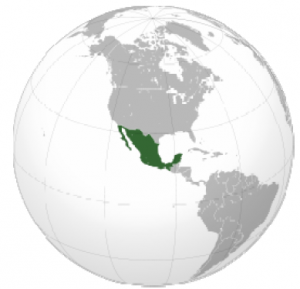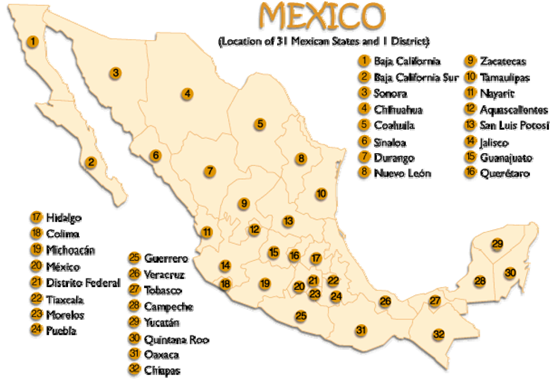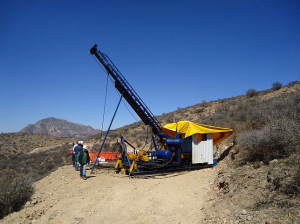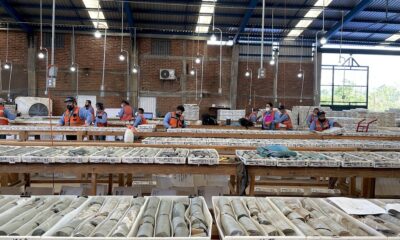Nyheter
Exploration all over Mexico
– great potential for more discoveries –
MORE MERGER & ACQUISITION ACTIVITY EXPECTED
For ages, Mexico has been recognized for its vast abundance of natural resources. Most of the attention went to silver, the metal the country seems to have the most of. In the very old days, the silver was mined and often robbed by the sailing visitors and brought to other parts of the world. Later, most of the silver was mined in circumstances that did not really benefit the regions and the population as they should have. Also the legal and structural situations did not contribute much to a fair distribution of the benefits. The ownership of mineral properties was restricted and led to a highly fragmented structure of the mining industry. Only the big Mexican mining groups such as Peñoles, Fresnillo, Grupo Mexico and Luismin succeeded to create big operations over the years, which made them belong to the largest silver producers of the world. It was mainly through their efforts that Mexico attained and maintained their position as the largest silver producing country in the world.
Today’s industry of mining and exploration in Mexico has changed considerably. With silver and gold prices recovering from marginal to real sound and economically feasible levels, we have seen 10 years of a development in Mexico’s resource industry that was never seen before and more importantly, will continue to last and be exciting for many years to come. Mexico is one of the best places to be for mining and exploration!
Among the many factors that have resulted in today’s status of Mexico’s mining and exploration industry, three significant factors stand out. Firstly, after a first change of the mining law in 1990 brought more liberal and transparent regulations, the implementation of the National Mining Development Plan, released in 2002 (and updated in 2007) made ownership of mining concessions a lot easier, including the possibility to own larger land positions than ever before. Secondly, the doors were opened to allow foreign companies to have 100% ownership of mining properties, provided that they were incorporated in a Mexican corporation. The idea of these changes was to facilitate the industry to enter a period of recovery after the previous almost 10 years of lagging world metal prices.
Whether it was coincidence or government vision, we will never exactly know but sure is that this Mining Development Plan was well-timed. The world’s metals markets showed initial signs of what looked like a recovery. And it really was, it was the beginning of the strong metal markets that we are still experiencing today. This development of metal prices was factor number 3 responsible for the current status of Mexico as a prosperous mining country.
Although Mexico has a mining history of over 500 years and the country has gone through 10 years of explosive growth and development of its mining industry, it is warranted to say that Mexico still is largely under-explored. With all the news that the established Mexican companies and the now over 300 foreign companies bring out, that statement may be difficult to believe but the following facts underwrite it:
- at most historical producing mines, deeper drilling show that mineralization stretches below the existing ore bodies, quite often even returning richer grades;
- exploration on previously unexplored land surrounding the producing mines, often turn out that the mineralization is stretching sideways too; several companies are developing new sources of mining on their properties;
- the bulk of the mining activities are in the two major mining belts extending for approximately 800km along the Sierra Madre Occidental Mountains, where several mines have come into production over the last few years; judging from the very encouraging results of several ongoing exploration projects it can be expected that more new mines will be developed within these belts;
- there are still many historically known former silver and gold producers that have been idle since many years, often privately owned or owned by the formerly popular co-operatives or families; disputes of ownership and/or price have in many cases restricted changing ownership into new hands; these properties have hardly ever been explored extensively and certainly not with the more advanced
- exploration technology that is available today; it may be expected that over time, several of these hidden or unavailable prospective projects will come into the limelight;
- next to the main mining states Sonora, Chihuahua, Zacatecas, Coahuila,
- Durango and Guanajuato where the drills are filling the air with their humming sounds, exploration is highly active and successful in other states, such as Nayarit, Guerrero, Guadelajara, Sinaloa, Baja California Sur, Jalisco, Oaxaca, San Luis Potosi and others.
In my previous issue of MINING IN MEXICO (see the website), I have given some more extensive background on why I have elected to add a separate publication on the mining and exploration developments in this country. As said then, Mexico is the largest silver producer in the world but I added that it is a lot more than that. It is also a growing gold producer and a solid producer of copper, zinc, lead and other metals and minerals.
According to a 2010 estimate, it was expected that the mining industry will invest US$13.8 billion in Mexico during the years 2010-2012. That means that combined with previous investment dating back to 2007, the mining industry will have invested US$21.75 billion by the end of 2012, an incredible and historic amount for this sector of the Mexican economy. I am anxiously awaiting the actual figures and any new estimates for these investments for the next two years. In light of the current developments, I am confident they will be quite higher!
Also in the previous issue, I mentioned some of the more interesting silver and gold producers and in the COMPANY REPORT on Great Panther Silver, I explained to you how a small exploration company can grow into an expanding and highly successful and profitable producer of silver and gold in just about 5 years. I should add that Great Panther was not the only company that accomplished that; in the same ’generation’ of companies, also others such as AuRico Gold (TSX:AUQ), Endeavour Silver (TSX:EDR, NYSE:EXK), Excellon Resources (TSX:EXN), First Majestic Silver (TSX:FR, NYSE:AG), Minefinders (recently acquired by Pan American Silver), Timmins Gold (TSX:TMM, NYSEA:TGD) achieved similar developments.
In this issue, I would like to give you an impression of what the exploration companies are doing with their projects. But it is virtually impossible to give you even an idea of what is going on in the Mexican mining and exploration scene as a whole, it is just too extensive. With several hundreds of companies active in the industry and working on a multiple number of projects, every overview would be incomplete.
It should go without saying that it is evenly impossible to follow all those exploration companies. As in normal life, the industry is about making choices. My primary focus is on the companies that have committed to be covered in my reports, the SUPPORTING COMPANIES. Based on some key factors, such as management, project base, status, exploration results, capital structure and some other things among which a good feeling, I follow quite a number of other companies in general, of which the most interesting will make it to the core list of my attention. I can’t name them all but they include Argonaut Gold (TSX:AR), Baja Mining (TSX:BAJ), Caza Gold (TSXV:CZY), El Tigre Silver (TSXV:ELS), Esperanza Resources (TSXV:EPZ), Gold Resource Corp. (NYSEA:GORO), MAG Silver Corp. (TSX:MAG), Revolution Resources (TSX:RV), Riverside Resources (TSXV:RRI), Scorpio Mining (TSX:SPM), Sierra Madre Developments (TSXV:SMG). You can be sure that several of these companies will succeed in developing their main projects to the production stage.
As an illustrative and representative picture of the current highly intensive exploration activity in Mexico, the following pages will review the Mexican projects of the SUPPORTING COMPANIES with the special focus on their exploration programs.
It should be noted that some of the companies mentioned are primarily focusing on the production side of their projects while several have other projects in other countries. In the context of this issue, you should realize that only their current exploration activities in Mexico are described herein. For a total overview and merits of the companies, you should visit the respective company websites. These companies will be extensively described in Company Reports, to be published in the near future and/or updated later this year.
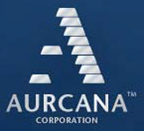 Increasing production capacity and exploring existing mineral deposits at La Negra
Increasing production capacity and exploring existing mineral deposits at La Negra
Aurcana Corporation
TSXV:AUN – price May 28: C$0.95
shares outstanding: 430.8 million, fully diluted: 558.0 million
Aurcana acquired the La Negra silver-copper-zinc-lead mine in Queretaro State in March 2006. Before it was put on care and maintenance in 2000, the mine produced 36 million oz silver, 323 million lbs zinc, 70 million lbs copper and 161 million lbs lead between 1970 and 2000. Aurcana refurbished the mine and mill, started full production in April 2007 at 800tpd and resumed exploration activities. The mill capacity was soon increased to 1,000 tpd, further to 1,500tpd in 2010 and will be expanded to 2,000tpd this year. Based on a mill capacity of 1500tpd, La Negra produced 1.7 million ounces of silver equivalent last year. During the last few quarters, production achieved record levels; in Q1 of 2012, silver production was reported at 287,486 ounces, the largest quarter for silver production in Aurcana’s history.
On the property, 28 mineral deposits are outlined, 23 historically by Peñoles and 5 more by the La Negra staff, accessible through over 60km of underground development on 5 main levels unto 500m vertical. Illustrating the perspective is that the existing mineral resource is based mainly on 3 of the 28 deposits. These 3 deposits are open at depth and other deposits are being investigated. At present, a 15,000m exploration program is in progress. In December 2011, the company reported that it identified significant amounts of mineralization with strong silver and copper values at the 1920m level. An updated resource figure is expected real soon.
Aurcana is the newest Supporting Company and I am really pleased to be able to report their developments to you. I am impressed about what the company achieved since Lenec Rodriguez became its President & CEO in May 2009. He brought vision and financing ability to the company. The Grand Opening of their Shafter Mine in the US will be taking place next week (see the June issue of GOLDVIEW) and the La Negra project is developing rapidly into a nice second production project. Aurcana is definitely on the go!
 Exploration leads to resuming production, becoming a multi-million ounces producer
Exploration leads to resuming production, becoming a multi-million ounces producer
Avino Silver & Gold Mines Ltd.
NYSE-AMEX, TSXV:ASM – price May 28: C$1.30
shares outstanding: 27.0 million, fully diluted: 34.9 million
The property of the Avino Mine near Durango in the heart of the Sierra Madre Silver Belt, covers approximately 13km². $25 million of capital expenditures and extensive exploration over the last few years have resulted in the Avino mine coming back to production after it was shut down in 2001. Ore from the San Gonzalo resource is milled at the 1250tpd mill, taken from level 2 and level 3 where the decline to level 4 is almost reaching the target. Also the original Avino vein is being prepared to resume production. This vein, 1.6km long and 60m wide, was the primary source of ore during the 27 years of production and has yet to be mined at depth. Avino is continuing its extensive exploration at the San Gonzalo zone as well as other highpotential targets on the property to expand known resources and the mines output.
Historic near-to-surface mining on the property has left many clues as to where mineralization hot spots are located. Last year, the bulk sampling at the San Gonzalo was completed successfully and was one of the driving factors to resume production.
Drilling is continuing at the San Gonzalo zone to possibly extend the mineralization at depth. Also in other zones, encouraging results were obtained. The Guadalupe zone returned favourable drill results and has the potential to become a significant source of future mill feed. Next in line seems to be the Elena-Tolosa zone where satisfactory drill results were obtained in the last two months.
The results of Avino’s continuing exploration programs are very encouraging and make me believe that their target to develop into a multi-million ounce producer over the next 3 to 4 years is quite feasible. Now that Avino is the full owner of the Avino project enhances the impact that their successful operations will come to the benefit of its shareholders. As further progress will be reported, the market is bound to recognize the ”new” Avino as a growth company.
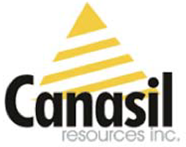 High quality property base, low downside risk, high upside potential
High quality property base, low downside risk, high upside potential
Canasil Resources Inc.
TSXV:CLZ – price May 28: C$0.11
shares outstanding: 66.8 million, fully diluted: 73.4 million
Canasil has an extensive and 100% owned project portfolio with 10 exploration projects -gold, silver, copper, lead and zinc- in the Durango, Sinaloa and Zacatecas States. Canasil combines working its exploration projects on its own and to seek joint-venture agreements for some properties with more advanced partners, the best way to achieve added value with low dilution and high leverage. At this time, Canasil focuses on its Sandra & Escobar project in Durango State where a phase 1 drill program was completed in 2011. More drilling will be conducted this year. The Sandra claims are owned by Canasil, the Escobar claims by Pan American Silver with an option to Canasil to earn a 51% interest, whereas Pan American Silver has an option to back-in to 51% in the combined claims and advance the project to feasibility and production. At the La Esperanza silver-project, situated in northern Zacatecas and southern Durango States and covering approximately 690 km², partner MAG Silver just completed Phase I of a 5,000m drill program. The last holes drilled returned very encouraging silver, zinc and lead intercepts. Drilling is about to resume and in addition, permits are expected soon to drill three additional veins. MAG can earn a 60% interest by spending $5 million over 4 years and it has taken a 4.5% shareholding interest. In 2012, Canasil continues to advance its drill ready projects.
Canasil has been on my radar screen for quite some years now. They have been making good solid progress and I always had the feeling that some day, they would be surprising us with a major break-through. The property base is very sound and in the major projects, Canasil has excellent joint-venture partners.
The company is a low downside risk situation with a high upside potential and I am kind of surprised that it still is independent. The management team, headed by Bahman Yamini is excellent and reliable; I am confident that they will steer the company to further prominence.
![]() Exciting exploration project with high gold values and porphyry gold-copper potential
Exciting exploration project with high gold values and porphyry gold-copper potential
Focus Gold Corp.
OTCBB:FGLD – price May 28: C$0.05
shares outstanding: 101.0 million, fully diluted: 130.0 million
As Focus Gold Corp is a relatively young company, it also has a relatively short history in Mexico. It started in December 2010, when it acquired an option to acquire 100% of the Huicicila gold project in Nayarit State, a high grade gold-silver vein system which was historically mined by Asarco back in the 1930s. The Huicicila covers 5 mining claims with a surface area of 10,12 km² and is described, in a NI 43-101 compliant report released in February 2010, as an ”economic to bonanza grade gold-silver deposit” with the identification of ”multiple veins with high gold analysis and gold demonstrated over 200 vertical meters”. Based on the discovery of ”more ore shoots of roughly the dimensions and grades of the Asarco historical reserves” the report states that ”a focused exploration program could thus discover 500,000 ounces of gold”.
Upon receipt of this NI 43-101 report, the company decided to expand its land holdings by acquiring the Focus 1 claim, the San Nicolas and Santa Fe claims, and later, the Focus 2 and Focus 3 claim. Thus, the land position of Focus Gold in Mexico has expanded to over 320 km², mostly contiguous. In June 2011, the company released a new NI 43-101 compliant report, confirming the findings of the earlier report and adding the potential presence of a large porphyry copper-gold system on the property. To further investigate this system, the company has focused its exploration efforts accordingly by a geophysical survey, extensive mapping, recruiting a world class porphyry expert and work to define drill targets to be tested in the drill program in the remainder of 2012.
The expansion of its land position and the most recent NI 43-101 report have considerably enhanced Focus Gold’s prospects. It will be interesting to follow the progress of the exploration program in defining the potential of the porphyry copper-gold presence. The recent entry of Peñoles, Chinese miner Sinotech|ZSDK and Tianjin BinHai Harbor Port Group Co in the area reflects the international attention that this mining district is receiving. It may well be possible that this attention will come to shine on Focus Gold too.
 Exploration serving continuation and expansion of production levels
Exploration serving continuation and expansion of production levels
Great Panther Silver Limited
TSX:GPR, NYSE:GPL – price May 28: C$1.94
shares outstanding: 137.6 million, fully diluted: 142.0 million
Great Panther is in the happy position that their exploration efforts are not having the objective to make a mine. With their Guanajuato Mine and Topia Mine operating successfully, the company’s exploration programs are designed to assure continuation and expansion of the production levels at the mines. Another significant difference with the average exploration company is that they have proven to know how to develop a project from exploration to production.
Great Panther’s exploration programs are continuing in full swing which led to a very recent (May 9) release of updated resource estimates at the Guanajuato Mine and the San Ignacio project. As the San Ignacio is actually a satellite of the Guanajuato Complex, its resource figures are now being included in the overall Guanajuato figures:
- the current Measured and Indicated mineral resource now contains 5,649,000 ounces of silver equivalent, replacing production from the Guanajuato Mine during the past 18 months;
- combined Inferred mineral resources at the Guanajuato and San Ignacio now are estimated at 9,397,000 ounces of silver equivalent;
- this estimate for San Ignacio increases the tonnage by 35%, the silver content by 29%, gold content by 51% over the previous estimate.
During the remainder of this year, the San Ignacio project will be the subject of intensive exploration and further mine development with the objective to contribute significantly to the growth potential for 2013. At the Topia Mine, the exploration activities primarily focuses on extending the strike length of known veins by additional drilling. At the Santa Rosa exploration project, a 2,000m drilling program will be completed this year.
My regular readers know how I think about Great Panther. In my view, it is a perfect example of what a well-managed company can accomplish in Mexico, given the right mix of projects and all the necessary management ingredients to develop those projects into successful production projects. The potential of Great Panther for the next few years is, in my opinion, not yet fully recognized by the investment public. The shares represent a solid interest in Mexico’s mining future.
 Exploring one of the largest land packages in the Sierra Madre Gold-Silver Belt
Exploring one of the largest land packages in the Sierra Madre Gold-Silver Belt
Paramount Gold & Silver
TSX, NYSE:PZG – price May 28: C$2.24
shares outstanding: 147.3 million, fully diluted: 158.1 million
With its 100% owned San Miguel Project in the Palmarejo Mining District of Chihuahua State, Paramount Gold & Silver holds a most promising and advanced exploration project. The location of the project is on the stretch of the Sierra Madre Gold-Silver Belt that includes Minefinders’ Dolores mine, Alamos’ Mulatos mine, Agnico-Eagle’s Pinos Altos mine, AuRico’s Ocampo mine, Kimber’s Monterde project, Coeur d’Alene’s Palmarejo mine and Goldcorp’s El Sauzal mine. Of these mining projects, Coeur d’Alene’s Palmarejo project is the most important to watch because Paramount’s land position is adjacent and almost encircling the Coeur project.
The San Miguel project has a NI 43-101 compliant resource in place: 8,005,000 tonnes containing 98,000 ounces of gold and 15,759,000 ounces of silver in the Measured & Indicated categories and 45,890,000 tonnes containing 877,700 ounces of gold and 56,848,000 ounces of silver in the Inferred category.
Intensive drilling programs are being continued at 4 different zones and over the last few months very encouraging news has come forward. The latest accomplishment was the discovery of a new high-grade gold-silver mineralization at La Bavisa, a new target that sits within the Palmarejo/Don Ese trend which, immediately to the west, hosts the successful Palmarejo and Guadalupe mines of Coeur d’Alene. The eventual result of the ongoing exploration program at the San Miguel project is to complete a Preliminary Economic Assessment before the end of this year.
I look at Paramount Gold & Silver as one of the more fascinating companies in general, in particular because I am impressed with its proprietary style of management. President and CEO Chris Grupi clearly set his goal and he is pursuing his path to accomplish it. The way he built the company’s project base with the complicated acquisition of the Sleeper Mine in Nevada and the strategic acquisition and expansion of the San Miguel project in Mexico deserve appreciation. I would not be surprised to see Paramount develop into a producer on both fronts.
 Successful exploration driving force behind successful expansion of gold production
Successful exploration driving force behind successful expansion of gold production
Timmins Gold Corp
TSX:TMM, NYSEA:TGD – price May 28: C$1.61
shares outstanding: 141.6 million, fully diluted: 152.6 million
Although Timmins Gold is focusing on its gold production from the 2 fully owned heap leaching operations at the San Francisco and La Chicharra projects in Sonora Sate, the 450km² land position leaves a great challenge for extensive exploration. As the company has planned to increase its gold production to 100,000 ounces in 2012 and 130,000 ounces in 2013, the exploration efforts are primarily designed to support and realize these plans. There is significant exploration upside at the flagship San Francisco Mine where several high potential targets have been located around the mine and the same counts for the Penasquito district where the La Chicharrra and the TIMM claims are situated. At the San Francisco Mine, exploration focuses on the potential to expand at depths greater than the 240m planned pit bottom and also around the pit; this year, 100,000m of drilling is planned. Illustrative for the exploration results is that during the last 18 months, over 2.2 million ounces could be added to the total of all categories gold reserves. The Measured & Indicated reserve currently stands at 1.57 million ounces (as per March 2012).
Exploration will also be conducted at the company’s TIMM Claims in Zacatecas State, a 500km² land package, contiguous to Goldcorp’s Penasquito gold deposit and 20km north-west of Goldcorp’s Camino Rojo project. The geological setting of the TIMM Claims is similar to the Penasquito deposit; samples returned assays over 1 g/t gold and over 450 g/t silver. A first drilling program is planned to start this quarter and will consist of 5,000m core drilling and 50,000m reverse circulation drilling. The developments at Timmins Gold are quite impressive. The company has come forward as a very successful gold producer in a relatively short period of time.
Less than 2 weeks ago, the results of Q1 were reported: in comparison to Q1 of last year, metal revenues were up 41%, profit up 32%, gold production up 15%, realized gold recoveries up 31%. Timmins Gold’s management team is making every effort to maintain a similar growth rate over the next few years. As said above, successful exploration is the driving force behind successful expansion of the company’s gold production.
The individual qualities, developments, opportunities and status of the companies involved in mining and exploration in Mexico should be seen in the context of the general attraction of Mexico as a mining and exploration nation. It is one of the most endowed countries with resources, it has an established position and reputation as a country where investors can feel comfortable to invest their money, it has a mining friendly government, it fully enjoys the benefits of high metal prices and not the least important, it is still largely under-explored.
Recently, the Mexican Trade Commissioner Emilio Rivero said ”This is the sweet spot. Right now, Mexico is a rising tide that is going to lift a lot of boats.” I fully agree and investors who have not yet included Mexico resource stocks in their portfolio, should get aboard!
[hr]
European Gold Centre
European Gold Centre analyzes and comments on gold, other metals & minerals and international mining and exploration companies in perspective to the rapidly changing world of economics, finance and investments. Through its publications, The Centre informs international investors, both institutional and private, primarily in Europe but also worldwide, who have an interest in natural resources and investing in resource companies.
The Centre also provides assistance to international mining and exploration companies in building and expanding their European investor following and shareholdership.
Henk J. Krasenberg
After my professional career in security analysis, investment advisory, porfolio management and investment banking, I made the decision to concentrate on and specialize in the world of metals, minerals and mining finance. From 1983 to 1992, I have been writing and consulting about gold, other metals and minerals and resource companies.
The depressed metal markets of the early 1990’s led me to a temporary shift. I pursued one of my other hobbies and started an art gallery in contemporary abstracts, awaiting a new cycle in metals and mining. That started to come in the early 2000’s and I returned to metals and mining in 2002 with the European Gold Centre.
With my GOLDVIEW reports, I have built an extensive institutional investor following in Europe and more of a private investor following in the rest of the world. In 2007, I introduced my MINING IN AFRICA publication, to be followed by MINING IN EUROPE in 2010 and MINING IN MEXICO in 2012.
For more information: www.europeangoldcentre.com
Nyheter
Tyskland har så höga elpriser att företag inte har råd att använda elektricitet

Tyskland har skrivit ner prognosen på hur mycket elektricitet landet kommer att behöva 2030. Hittills har prognosen varit 750 TWh, vilken nu har skrivits ner till 600-700 TWh,
Det kan vid en första anblick låta positivt. Men orsaken är inte att effektiviseringar. Utan priserna är så pass höga att företag inte har råd att använda elektriciteten. Elintensiv industri flyttar sin verksamhet till andra länder och få företag satsar på att etablera energikrävande verksamhet i landet.
Tyskland har inte heller någon plan för att förändra sin havererade energipolitik. Eller rättare sagt, planen är att uppfinna fusionskraft och använda det som energikälla. Något som dock inte löser problemet på några årtionden.
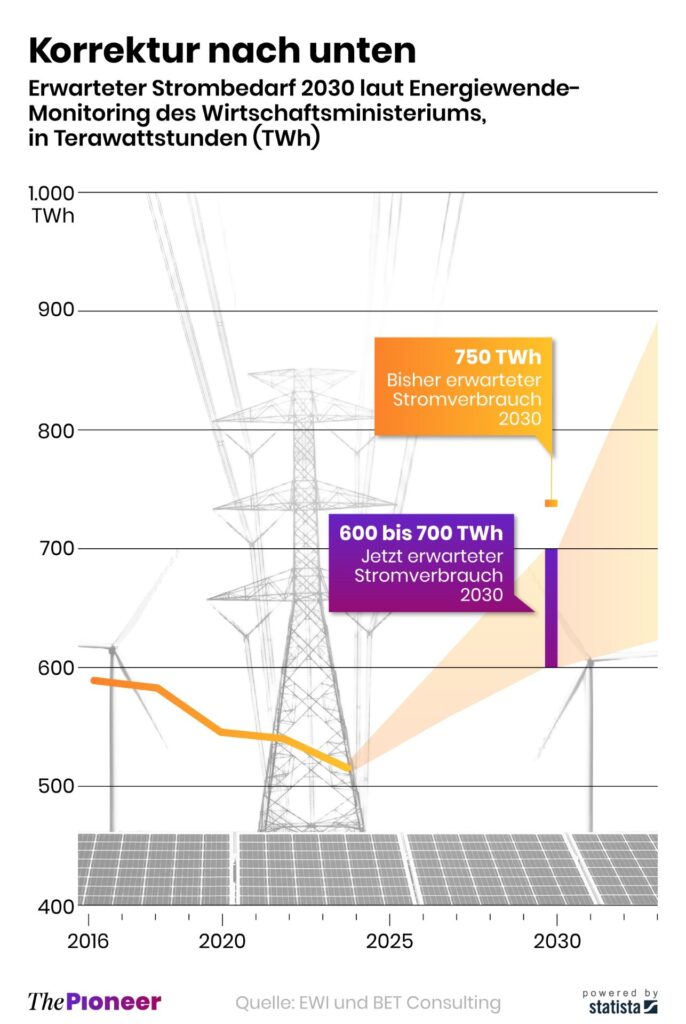
Nyheter
Kinas elproduktion slog nytt rekord i augusti, vilket även kolkraft gjorde

Kinas officiella statistik för elproduktion har släppts för augusti och den visar att landet slog ett nytt rekord. Under augusti producerades 936 TWh elektricitet.
Stephen Stapczynski på Bloomberg lyfter fram att det är ungefär lika mycket som Japan producerar per år, vilket innebär är de producerar ungefär lika mycket elektricitet per invånare.
Kinas elproduktion kom i augusti från:
| Fossil energi | 67 % |
| Vattenkraft | 16 % |
| Vind och Sol | 13 % |
| Kärnkraft | 5 % |
Stapczynskis kollega Javier Blas uppmärksammar även att det totala rekordet inkluderade ett nytt rekord för kolkraft. Termisk energi (där nästan allting är kol) producerade 627,4 TWh under augusti. Vi rapporterade tidigare i år att Kina under första kvartalet slog ett nytt rekord i kolproduktion.
Nyheter
Det stigande guldpriset en utmaning för smyckesköpare
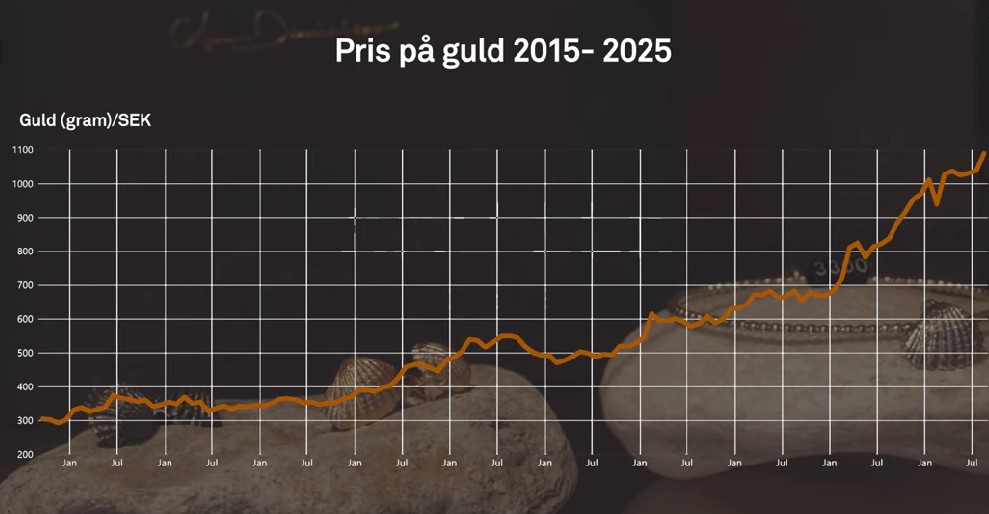
Guldpriset når hela tiden nya höjder och det märks för folk när de ska köpa smycken. Det gör att butikerna måste justera upp sina priser löpande och kunder funderar på om det går att välja något med lägre karat eller mindre diamant. Anna Danielsson, vd på Smyckevalvet, säger att det samtidigt gör att kunderna får upp ögonen för värdet av att äga guld. Det högre guldpriset har även gjort att gamla smycken som ligger hemma i folks byrålådor kan ha fått ett överraskande högt värde.
-

 Nyheter4 veckor sedan
Nyheter4 veckor sedanMeta bygger ett AI-datacenter på 5 GW och 2,25 GW gaskraftverk
-

 Nyheter4 veckor sedan
Nyheter4 veckor sedanAker BP gör ett av Norges största oljefynd på ett decennium, stärker resurserna i Yggdrasilområdet
-

 Nyheter4 veckor sedan
Nyheter4 veckor sedanEtt samtal om koppar, kaffe och spannmål
-

 Analys4 veckor sedan
Analys4 veckor sedanBrent sideways on sanctions and peace talks
-

 Nyheter4 veckor sedan
Nyheter4 veckor sedanSommarens torka kan ge högre elpriser i höst
-

 Analys4 veckor sedan
Analys4 veckor sedanBrent edges higher as India–Russia oil trade draws U.S. ire and Powell takes the stage at Jackson Hole
-

 Nyheter3 veckor sedan
Nyheter3 veckor sedanMahvie Minerals är verksamt i guldrikt område i Finland
-

 Analys3 veckor sedan
Analys3 veckor sedanIncreasing risk that OPEC+ will unwind the last 1.65 mb/d of cuts when they meet on 7 September



